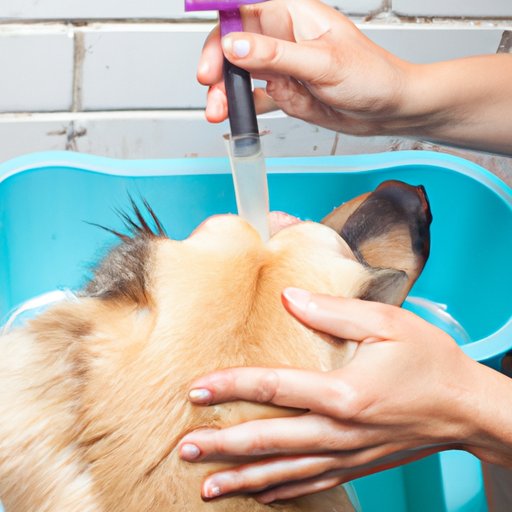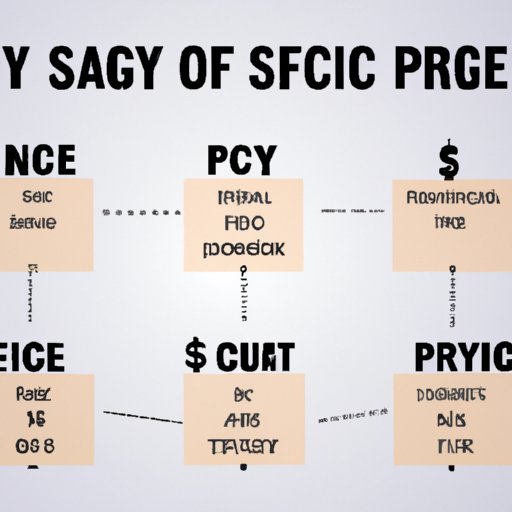Introduction
Spaying a dog is a major decision with long-term health and financial implications. Spaying is a surgical procedure that involves removing the ovaries and uterus of a female dog, which prevents them from becoming pregnant and having puppies. In this article, we’ll explore the cost of spaying a dog, what to expect, and how to budget for it.
Analyzing the Cost of Spaying a Dog: What to Expect
The cost of spaying a dog can vary greatly depending on several factors, such as the size and age of the dog, the veterinarian performing the procedure, and any additional tests or treatments that may be necessary. To get an idea of what you can expect, let’s take a look at some of the average costs associated with spaying a dog.
Examining the Average Cost of Spaying a Dog
On average, the cost of spaying a dog can range anywhere from $50 to $200 or more, depending on the factors mentioned above. Generally speaking, spaying larger dogs will cost more than spaying smaller dogs, and puppies tend to cost less than adult dogs. You should also factor in additional costs for pre-surgical testing, medications, and follow-up visits.
Exploring Additional Costs Associated with Spaying a Dog
In addition to the actual cost of the surgery, there are other costs associated with spaying a dog that you should consider. These include the cost of pre-surgical blood work and other tests, which can range from $50 to $100; anesthesia, which can cost anywhere from $30 to $75; and post-operative medications, which can cost around $20 to $40. Additionally, you may need to pay for follow-up visits, which can add up quickly.
How Much Should You Budget for Spaying Your Dog?
When budgeting for spaying your dog, it’s important to factor in all of the potential costs associated with the procedure. The best way to do this is to contact your veterinarian to get an estimate of the total cost. This will help you plan ahead and make sure that you have enough money set aside for the procedure.

Factors That Impact the Cost of Spaying a Dog
As mentioned earlier, there are several factors that can affect the cost of spaying a dog. These include the size and age of the dog, the veterinarian performing the procedure, and any additional tests or treatments that may be necessary. Additionally, the location of the veterinarian’s office can also impact the cost, as prices tend to be higher in urban areas than in rural areas.

Tips for Minimizing the Cost of Spaying a Dog
To minimize the cost of spaying your dog, it’s important to shop around and compare prices. Contact multiple veterinarians in your area and ask for estimates on the cost of the procedure. Additionally, many animal shelters and rescue organizations offer low-cost spaying services, so it’s worth looking into these options as well.
Is Spaying a Dog Worth the Expense?
Spaying a dog is an important decision with both short-term and long-term implications. While there are costs associated with the procedure, there are also numerous benefits. Let’s take a look at some of the advantages and considerations when deciding whether or not to spay your dog.

Benefits of Spaying a Dog
The most obvious benefit of spaying a dog is that it prevents unwanted pregnancies. Spaying also helps reduce the risk of certain reproductive diseases and cancers, such as mammary cancer, ovarian cancer, and uterine infections. Additionally, spayed dogs tend to be calmer and less aggressive, making them easier to train and manage.
Considerations When Deciding Whether to Spay or Not
While there are several benefits to spaying a dog, it’s important to consider the potential risks as well. Spaying a dog can increase the risk of urinary incontinence and hip dysplasia, and can also affect the dog’s metabolism and energy levels. Additionally, spaying a dog too early can lead to stunted growth and other health issues.
A Comprehensive Guide to Spaying a Dog and the Cost Implications
Now that we’ve discussed the cost of spaying a dog and the pros and cons of doing so, let’s take a look at the steps involved in the procedure and the cost breakdown. This will help you better understand the cost implications and prepare for the procedure.

Steps Involved in Spaying a Dog
The first step in spaying a dog is to schedule an appointment with your veterinarian. At the appointment, your vet will perform a physical exam and run any necessary tests. If the tests come back normal, the vet will administer anesthesia and perform the surgery. After the surgery, the vet will give you instructions for caring for your dog during the recovery period.
Understanding the Cost Breakdown
The cost of spaying a dog can vary depending on several factors, such as the size and age of the dog, the veterinarian performing the procedure, and any additional tests or treatments that may be necessary. Generally speaking, the cost of the procedure itself will range from $50 to $200 or more. Additionally, you should factor in pre-surgical tests, anesthesia, and post-operative medications, which can add up quickly.
The Pros and Cons of Spaying a Dog: What is the Cost?
Spaying a dog is a major decision with financial and health implications. It’s important to weigh the pros and cons before making a decision, and to factor in the cost of the procedure. On average, the cost of spaying a dog can range from $50 to $200 or more, depending on the size and age of the dog and any additional tests or treatments that may be necessary.
Conclusion
Spaying a dog is an important decision with both short-term and long-term implications. The cost of spaying a dog can vary greatly depending on several factors, such as the size and age of the dog, the veterinarian performing the procedure, and any additional tests or treatments that may be necessary. Ultimately, it’s important to consider the pros and cons of spaying a dog and to factor in the cost of the procedure before making a decision.
(Note: Is this article not meeting your expectations? Do you have knowledge or insights to share? Unlock new opportunities and expand your reach by joining our authors team. Click Registration to join us and share your expertise with our readers.)
